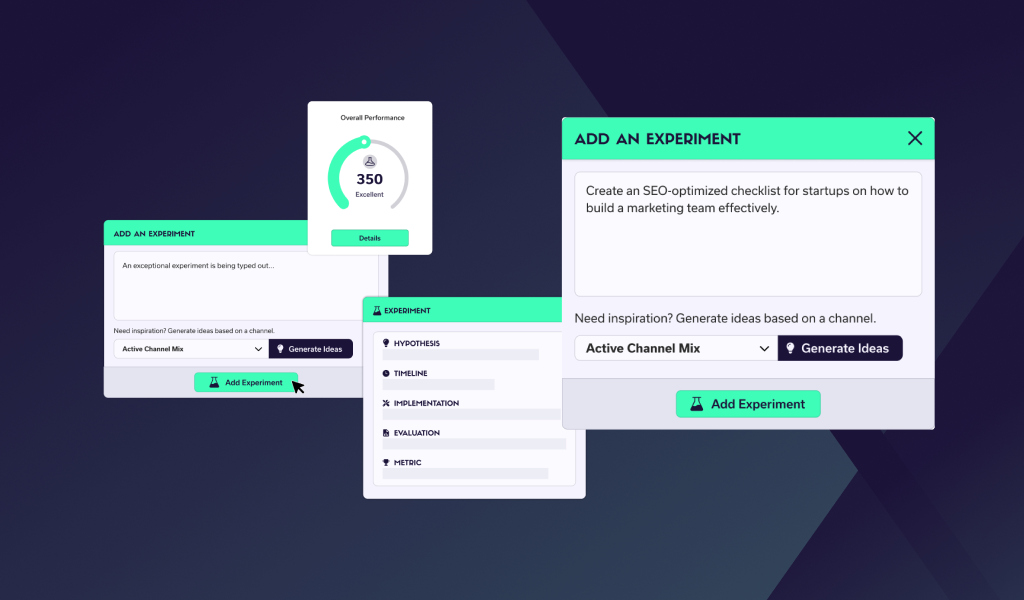In today's digital age, mobile marketing is a crucial component of any successful marketing strategy. With millions of smartphone users worldwide, businesses have the opportunity to reach their target audience on the go. But how can you determine the effectiveness of your mobile marketing efforts? Enter mobile marketing analytics. By measuring and analysing various metrics, you can gain valuable insights into your campaign's performance and make data-driven decisions to optimise your mobile marketing strategy. In this step-by-step guide, we will explore the world of mobile marketing analytics and equip you with the knowledge and tools you need to measure the success of your mobile marketing campaigns.
Understanding Mobile Marketing Analytics
Before diving into the nitty-gritty details of mobile marketing analytics, it's important to understand its significance. Mobile marketing analytics refers to the process of tracking, measuring, and analysing the data generated by your mobile marketing activities. By examining key metrics, you can gain a comprehensive understanding of the impact of your mobile marketing efforts on your target audience.
Mobile marketing has become an essential component of any successful marketing strategy. With the exponential growth of smartphone usage, businesses have recognised the need to optimise their marketing efforts for mobile devices. However, simply implementing mobile marketing campaigns is not enough. To truly harness the power of mobile marketing, it is crucial to delve into the world of mobile marketing analytics.
Importance of Mobile Marketing Analytics
Mobile marketing analytics plays a crucial role in helping businesses make informed decisions regarding their mobile marketing strategies. By analysing data, you can identify trends, understand user behaviour, and measure the effectiveness of your campaigns. This invaluable information enables you to optimise your mobile marketing efforts, allocate resources efficiently, and drive better results.
Understanding the impact of your mobile marketing activities is essential for staying ahead of the competition. With mobile devices becoming the primary means of accessing the internet for many individuals, it is vital to ensure that your mobile marketing efforts are yielding the desired results. Mobile marketing analytics provides you with the tools and insights to evaluate the success of your campaigns and make data-driven decisions.
Key Metrics in Mobile Marketing Analytics
When it comes to mobile marketing analytics, several key metrics provide valuable insights into your campaign's success:
- App Installs: Tracking the number of installations provides an indication of how well your mobile app is being received by your target audience. This metric helps you gauge the initial interest and adoption of your app.
- User Engagement: Measuring metrics such as session duration, screen views, and interactions helps evaluate how engaged users are with your mobile app or website. Understanding user engagement allows you to identify areas for improvement and enhance the overall user experience.
- Retention Rate: This metric tells you how many users continue to use your app after a certain period. A high retention rate indicates user satisfaction and loyalty. By monitoring the retention rate, you can identify factors that contribute to user churn and take proactive measures to retain your valuable users.
- Conversion Rate: The conversion rate measures the percentage of users who take a desired action, such as making a purchase or filling out a form. It provides insights into the effectiveness of your mobile marketing campaigns in driving user actions. By optimising your conversion rate, you can maximise the return on investment for your marketing efforts.
- Revenue: Monitoring the revenue generated through your mobile marketing efforts allows you to assess the financial impact of your campaigns. By tracking revenue, you can determine the profitability of your mobile marketing analytics and make data-driven decisions to optimise your revenue streams.
These key metrics are just the tip of the iceberg when it comes to mobile marketing analytics. There are numerous other metrics and data points that can provide valuable insights into your mobile marketing campaigns. By continuously monitoring and analysing these metrics, you can stay ahead of the curve and drive meaningful results through your mobile marketing efforts.
Setting Up Your Mobile Marketing Analytics
Now that you understand the importance of mobile marketing analytics and the key metrics involved, it's time to set up your mobile analytics infrastructure.
Choosing the Right Tools for Mobile Analytics
Several analytics tools are available in the market, each offering unique features and capabilities. It's essential to choose a tool that aligns with your specific requirements. Some popular mobile analytics tools include Google Analytics, Firebase Analytics, and Flurry Analytics. Evaluating these tools and selecting the one that best suits your needs is a critical first step.
Integrating Analytics into Your Mobile Marketing Strategy
Once you've chosen your analytics tool, it's time to integrate it into your mobile marketing strategy. This involves incorporating the necessary tracking codes and SDKs (Software Development Kits) into your mobile app or website. By doing so, you can start collecting valuable data and gain insights into how users interact with your mobile marketing campaigns.
Step-by-Step Guide to Measuring Mobile Marketing Analytics
Defining Your Mobile Marketing Goals
Before diving into the data, it's important to establish clear goals for your mobile marketing campaigns. What do you want to achieve with your mobile marketing efforts? Is it increased app downloads, higher user engagement, or improved conversions? Defining specific goals ensures that you focus your efforts on the metrics that matter most to your business.
Tracking User Engagement and Behaviour
Measuring user engagement and behaviour provides critical insights into how users are interacting with your app or website. Analyse metrics like session duration, bounce rate, and screen views to understand how users navigate your mobile platform. By identifying areas where users drop off or exhibit high engagement, you can optimise your user experience and drive better results.
Analysing User Acquisition and Retention
Understanding how users discover and interact with your mobile app is essential for driving growth. By tracking metrics like user acquisition channels, cost per acquisition, and retention rate, you can identify the most effective marketing channels and optimise your acquisition strategies accordingly. Additionally, analysing retention rate allows you to gauge user satisfaction and tailor your retention efforts to increase loyalty.
Measuring Conversion and Sales
The ultimate goal of any marketing campaign is to drive conversions and generate revenue. By monitoring conversion metrics like conversion rate, average order value, and revenue per user, you can assess the effectiveness of your mobile marketing efforts in driving sales. This information enables you to optimise your conversion funnels, identify bottlenecks, and maximise your return on investment.
Interpreting Your Mobile Marketing Analytics Data
Now that you have gathered and analysed your mobile marketing data, it's time to extract meaningful insights and make data-driven decisions.
Understanding User Segmentation
Segmenting your user base allows you to identify distinct groups with unique preferences and behaviours. By examining user segments, you can tailor your marketing messages, personalise user experiences, and maximise engagement. Common segmentation categories include demographics, location, and user behaviour.
Making Data-Driven Decisions
Mobile marketing analytics empowers you to make informed decisions based on data rather than speculation. By relying on concrete insights, you can optimise your mobile marketing strategies, allocate resources effectively, and drive better results. Regularly analyse your analytics data, monitor trends, and refine your approach to stay ahead of the competition.
Mobile Marketing Analytics Case Studies
Successful Mobile Marketing Analytics Strategies
Examining successful case studies can provide inspiration and valuable insights into effective mobile marketing analytics strategies. Learn from their experiences and adapt their strategies to suit your unique business goals and target audience.
For example:
Starbucks' App Magic
Background: Starbucks harnessed mobile app data to boost engagement and loyalty.
Strategy: Personalisation, location-based offers, behaviour analysis, and A/B testing.
Results: Increased engagement, higher sales, better loyalty, and data-driven decisions.
Amazon's Mobile Ad Mastery
Background: Amazon used mobile analytics for targeted advertising.
Strategy: Behaviour tracking, contextual ads, cross-device journey tracking, and ad performance analysis.
Results: Improved ad relevance, increased conversions, better ROI, and enhanced user experience.
Nike's Mobile Gamification Success
Background: Nike employed mobile marketing analytics to gamify user engagement.
Strategy: Gamification elements in the Nike app, real-time activity tracking, personalised challenges, and social sharing.
Results: Higher app usage, increased physical activity, improved brand loyalty, and valuable user data insights.
Lessons Learned from Mobile Marketing Analytics Failures
Even the most successful businesses experience setbacks and failures. By studying failures in mobile marketing analytics, you can avoid making the same mistakes and improve your chances of success.
For example:
PepsiCo's Kendall Jenner Ad Campaign
Background: PepsiCo launched a global ad featuring Kendall Jenner, aiming for social and political relevance.
Issues: Insensitive portrayal of real-world protests, trivialising serious issues, cultural insensitivity, and tone-deaf messaging.
Results: Widespread backlash, accusations of appropriating activism, accusations of exploitation, boycott threats, and eventual campaign withdrawal.
McDonald's #McDStories Twitter Campaign
Background: McDonald's launched the #McDStories hashtag on Twitter to encourage positive customer stories.
Issues: The hashtag was quickly hijacked by users sharing negative experiences, health concerns, and criticisms of the brand.
Results: Backfired marketing effort, negative brand perception, widespread mockery, and unintended highlighting of customer dissatisfaction. McDonald's had to withdraw the campaign and damage control.
DEF Gaming's Ignored Metrics
Background: DEF Gaming ignored crucial mobile marketing metrics.
Issues: Ignored user feedback, neglected app performance metrics, minimal usability testing, and failed to address technical issues.
Results: Frequent app crashes, negative user reviews, declining user base, and missed opportunities for improvement and growth.
In conclusion
Mobile marketing analytics is an indispensable tool for measuring the success of your mobile marketing campaigns. By understanding the key metrics, setting up robust analytics infrastructure, and analysing the data, you can make informed decisions and optimise your mobile marketing strategies. Embrace the power of analytics, and leverage valuable insights to drive growth and success in the dynamic world of mobile marketing.
Talk to a Growth Advisor
We create a clear, focused marketing strategy by combining our expertise with your knowledge of your business.
Trusted by over 130 startups because our unique growth process and team of marketing experts unlock exponential growth











